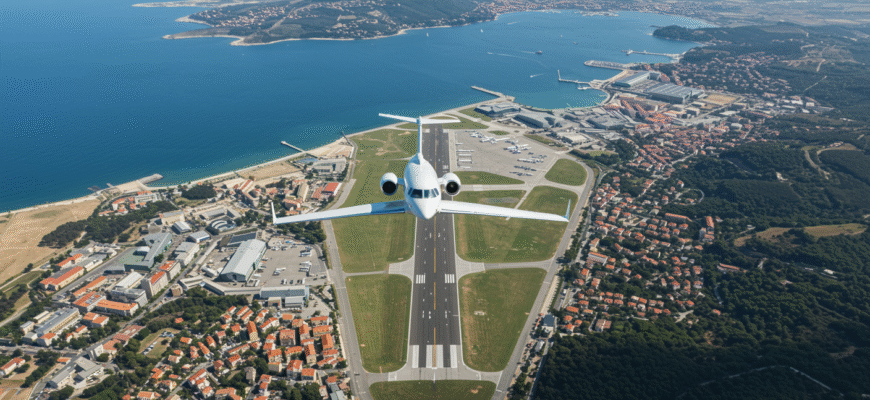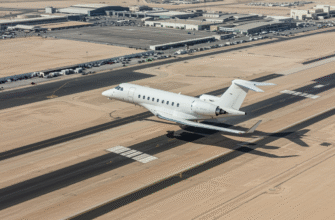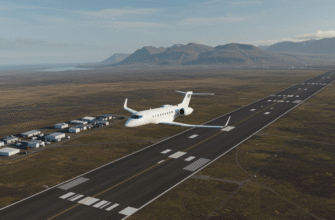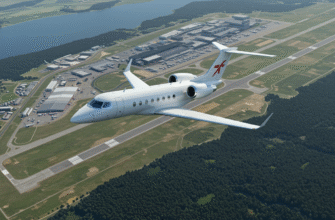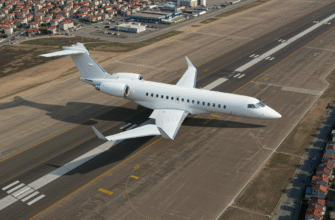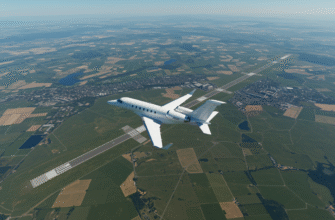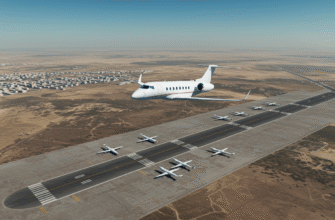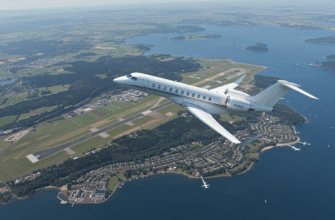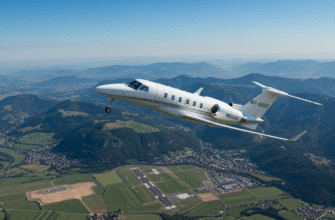Most travelers don’t think about turbulence until they’re smack in the middle of it. But ask anyone who’s landed in Corsica, and they’ll tell you—Ajaccio Napoleon Bonaparte Airport (AJA) doesn’t ease you in. It spits you out, sunburnt and wide-eyed, often gripping an armrest a little too tightly. This isn’t your average arrival.
AJA is the only airport on Earth named after Napoleon Bonaparte, a man you either learned about in history class or through that viral meme with the tiny hat. He was born just down the road, and while he never flew a plane, his presence lingers in bronze busts, tourist trinkets, and the proudly spoken stories of locals.
The setting is pure dramatic Mediterranean. The airport practically kisses the sea from one side while the mountain ridges loom on the other. What starts out as postcard-perfect quickly becomes a shaky descent into an island that doesn’t believe in landing gently. Strong crosswinds, creeping sea fog, and an impossibly low elevation make every arrival an unpredictable adventure.
So yeah, it’s named after Napoleon—but what makes this airport unforgettable is that flying in feels like surviving a dare.
What Makes Ajaccio Napoleon Bonaparte Airport ‘Different’ — And Why Travelers Care
There are airports, and then there’s AJA. It’s not just stamped with the name of a former emperor—it kind of carries his energy, too. Confident, chaotic, and unapologetically Corsican.
Try landing here once and you’ll see: your plane drops toward an airfield that barely seems to clear the coastline. Just 17 feet above sea level, the runway skims a Mediterranean shelf notorious for mood swings. One moment it’s all calm skies and coastal glow, and the next, it’s sideways wind gusts punching into your seatbelt.
Locals consider the airport an extension of the island itself—mountainous, headstrong, and full of drama. The approach path gives even experienced pilots a run for their money, thanks to its tight airspace hemmed in by rising terrain and volatile air currents. You can practically hear the sigh of relief when the wheels touch down.
It’s the mix of raw terrain and loaded history that gets people talking. And even if you’ve flown hundreds of times before, landing at AJA feels strangely personal. Maybe it’s the view. Maybe it’s the nerves. Or maybe it’s just that Corsica knows how to make an entrance.
Flying In Isn’t Just A Flight — It’s A Trial By Air
Let’s not sugarcoat it—AJA is flat-out one of France’s trickiest landings, and pilots know it. The final descent is a narrow opportunity tossed between sea spray and exposed runway. There’s no generous glide slope or forgiveness built into the airspace. You overshoot or veer, and suddenly you’re introducing your Air France feeder jet to a ragged cliff or someone’s unsuspecting olive grove.
It gets sketchier thanks to what’s hidden under your feet. Parts of the runway still house remnants of WWII Marsden mats—those steel grid plates American forces laid fast and dirty during Operation Vésuve. Some old-school pilots joke that you can still feel the “cheese grater” texture underneath when braking too hard.
And if the terrain wasn’t enough of a psychological workout, the weather has no chill either. The mistral winds show up out of nowhere, slapping planes sideways across the short runway. Fog decides when it wants to part, sometimes only revealing the runway seconds before touchdown.
Corsica’s seasonal temper tantrums don’t stick to a forecast. Storm cells can spin up from inland ridges fast enough to cancel entire arrival batches, leading to go-arounds that leave passengers air-sick and grumbling.
Throw in the unexpected buzz of wild animals—and we’re not talking metaphor here. Occasionally, boars wander in from the surrounding scrublands, like they’re running late for baggage claim. There are birds, too, and a few furry locals who mistake the runway lights for a party invite.
Here’s a quick snapshot of what makes this landing zone unforgettable:
| Aspect | Detail |
|---|---|
| Elevation | 17 ft above sea level — insanely low |
| Runway Surface | Bituminous concrete with buried WWII Marsden mats |
| Weather Drama | Crosswinds, sea fog, sudden storm formations |
| Animal Activity | Occasional boars, birds, mammals near runways |
| Approach Style | Over water, tight glide path, minimal room for error |
The History Beneath Your Sandals
Before it was an airport, before even Napoleon knew how to spell “conquer,” Campo dell’Oro was mostly a marshy wasteland dotted with myths and mosquitoes. Despite the poetic name—“Field of Gold”—you weren’t going to find buried treasure. You were more likely to leave with a mild fever from stagnant water.
All that changed during World War II when American forces turned the soggy field into a makeshift airstrip by slapping down perforated metal sheets. Think: communal cheese grater built for fighter planes. It worked… kind of. Heavy aircraft like the B-26 Marauder had a rough time—soft dirt, poor grip, and short distance meant takeoffs came with white knuckles and prayers.
Eventually paved and upgraded in the post-war boom of the 1960s, the airport doubled as Corsica’s front door to the glittering world of tourism. Rich continentals showed up, sunglasses first. And soon, flights weren’t just about supply runs or recon—they were packed with families bunking in beach villas and city kids chasing saltwater highs.
Yet amid all the upgrades, Napoleon never left. His image hangs in the terminal. Busts, plaques, and even bobbleheads stare back at you from gift shop windows. He may have grown up just a few minutes away, but at AJA, he feels like the unofficial greeter.
- WWII-era runway materials still echo beneath modern tarmac
- The first commercial flights were literal splashdowns—seaplanes from Marseille
- Modern terminal opened in the 1960s and grew with tourism
- Legend clings to the airport’s name—though no one’s found actual “gold”
- Napoleon’s birthplace is visible from the tarmac if you squint the right way
When Travel Brochures Lie: What They Don’t Tell You About AJA
They don’t warn you about showing up to Ajaccio Napoleon Bonaparte Airport and thinking you booked a flight back to 1996. That’s the vibe. Brutalist concrete, ductwork that groans in the heat, and benches that look like the designer gave up halfway through. Climate control? Barely. You’ll shiver in arrivals and sweat in departures. Don’t even ask about the baggage carousel during afternoon landings from Paris — one slow, stubborn belt, and zero explanation for the holdup.
Sit down? Only if you claim your spot early. Get hungry? Hope you like vending machines, because dining choices are laughable. Locals even joke that the wild boars have more gourmet options outside the fence line.
Planning to leave without your own ride? Best of luck. There’s no train station. Buses are mythical — they exist, technically, but may as well operate by cosmic moon cycles. If you didn’t pre-book a taxi, welcome to the hour-long summer queue. Drivers are nice though — just don’t expect Uber. Or exact change.
Language-wise, English can feel like an afterthought. Most signs are in French or Corsican. Some staff will help, some will smile and wave you toward a map. Winging it becomes part of the AJA experience. Fun? Kinda. Efficient? Not really.
Why You Might Still Want to Fly Here Anyway
There’s a reason people keep coming back, even if the airport’s aesthetic screams post-Soviet retirement annex. That final approach? Unreal. Turquoise surf brushing golden shores. Jagged Corsican mountains flying by close enough to make you hold your breath. Feels like a plane window became a movie trailer. Tourists literally gasp.
Once you’re on the ground, the access is unbeatable. Hop in a rental car — if your reservation survived — and you’re 10 minutes from Ajaccio’s Old Town, grocery stands full of figs and cheese, and beaches that haven’t seen corporate branding. Southern Corsica doesn’t hand you luxury — you chase after it on winding roads with bougainvillea spilling over the guardrails. AJA puts you right in reach.
Flights here don’t run non-stop like major city hubs, and that’s kind of the point. Fewer crowds. Quieter terminals. Less friction. When flights are spaced out well, baggage reclaim isn’t the soul-crushing mess it can be at places like Orly. Locals and seasonal staff alike tend to keep the vibe… casual. Yes, it’s rough around the edges, but exactly the chill gateway some travelers live for.
Your Corsican Adventure Starts (and Often Ends) With a Story
Anyone who’s landed at Ajaccio’s airport has a story. Loud. Weird. Memorable. The place doesn’t coddle you — it throws you headfirst into island chaos. One pilot dodging sidewinds while swearing in French over the intercom. One tourist stranded in the parking lot with nothing but silence and a prepaid SIM that hasn’t loaded yet. It’s all very Corsican in the best possible way: tough, mysterious, and only semi-interested in explaining itself to outsiders.
- Rumor has it someone once spotted a statue of Napoleon circling the luggage belt during a festival.
- Another traveler swears the airport bartender offered pre-boarding shots after a delay caused by morning fog.
- One family missed their connection and just rented a car to “see where it took them” — they ended up cliff-jumping with local kids an hour later.
The charm isn’t always on paper, but if you make it through the mechanical shrugs and the wild boar rumors, congratulations — you’ve officially earned your stripes. Corsica doesn’t open itself easily. But once you’ve survived AJA, you’re in. Not just as a tourist, but as someone who gets that travel isn’t always slick and polished. Sometimes, it starts with fog, heatwaves, and a parking lot full of mopeds. And sometimes, that’s exactly how the good stories begin.
